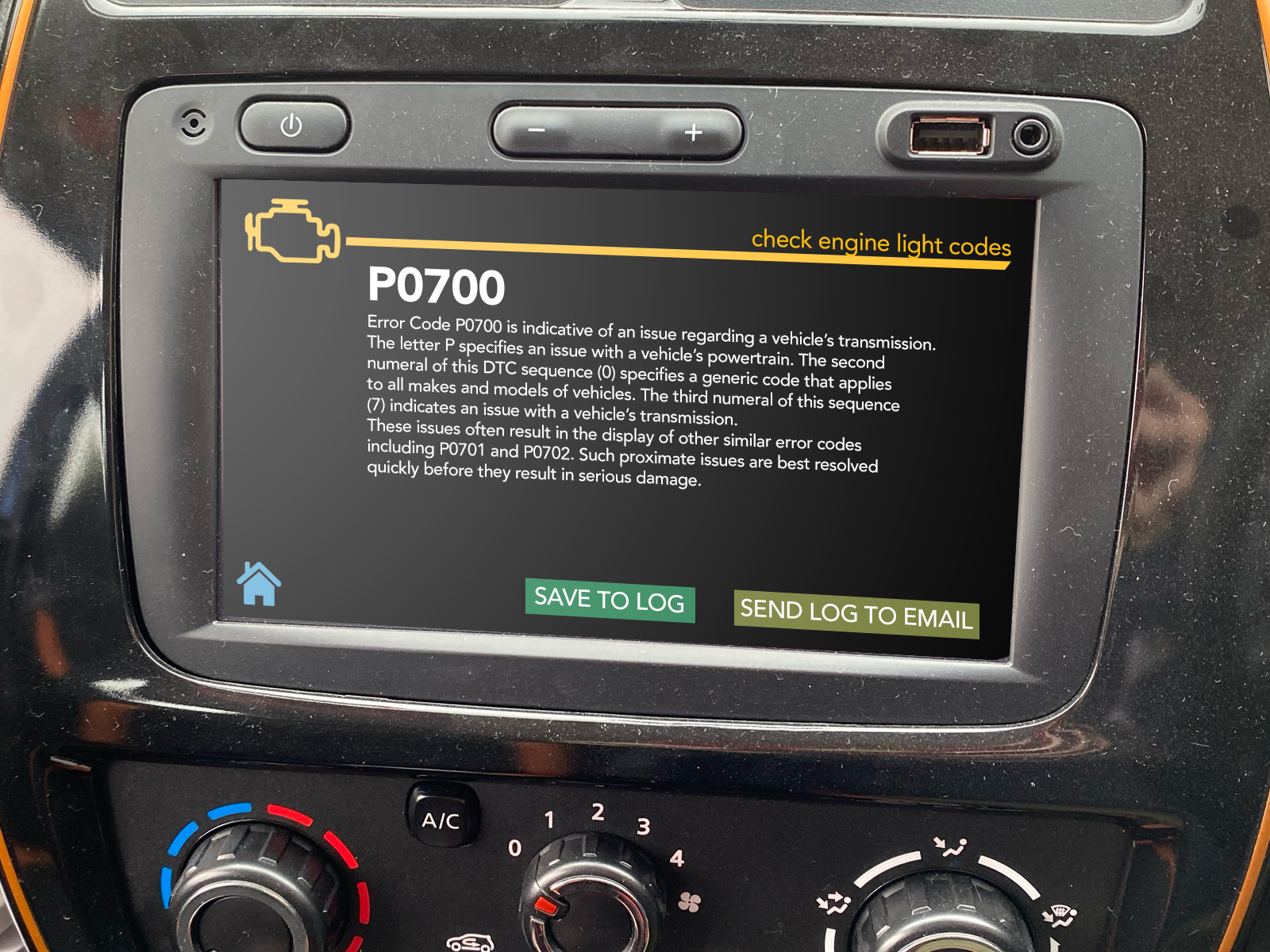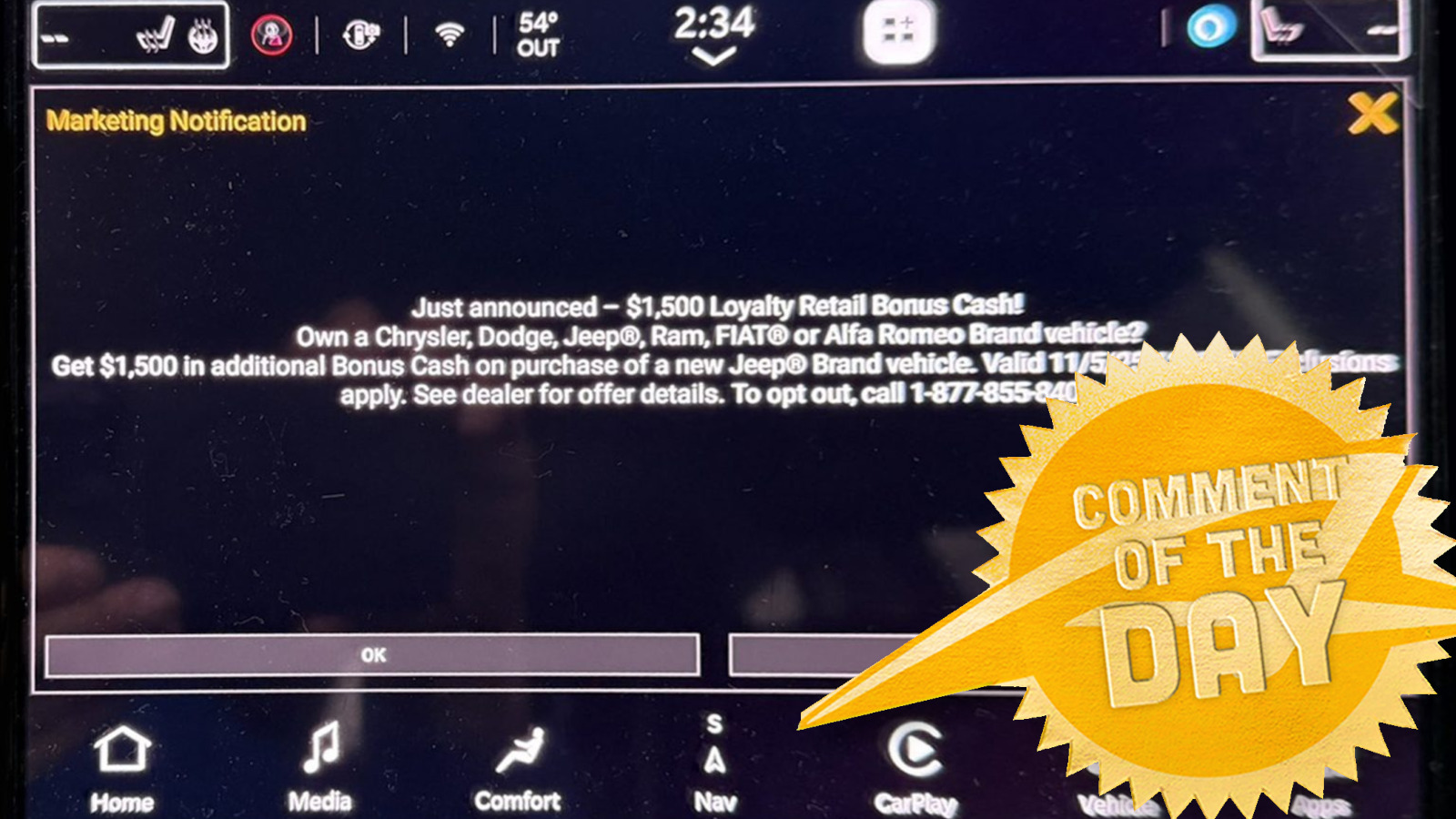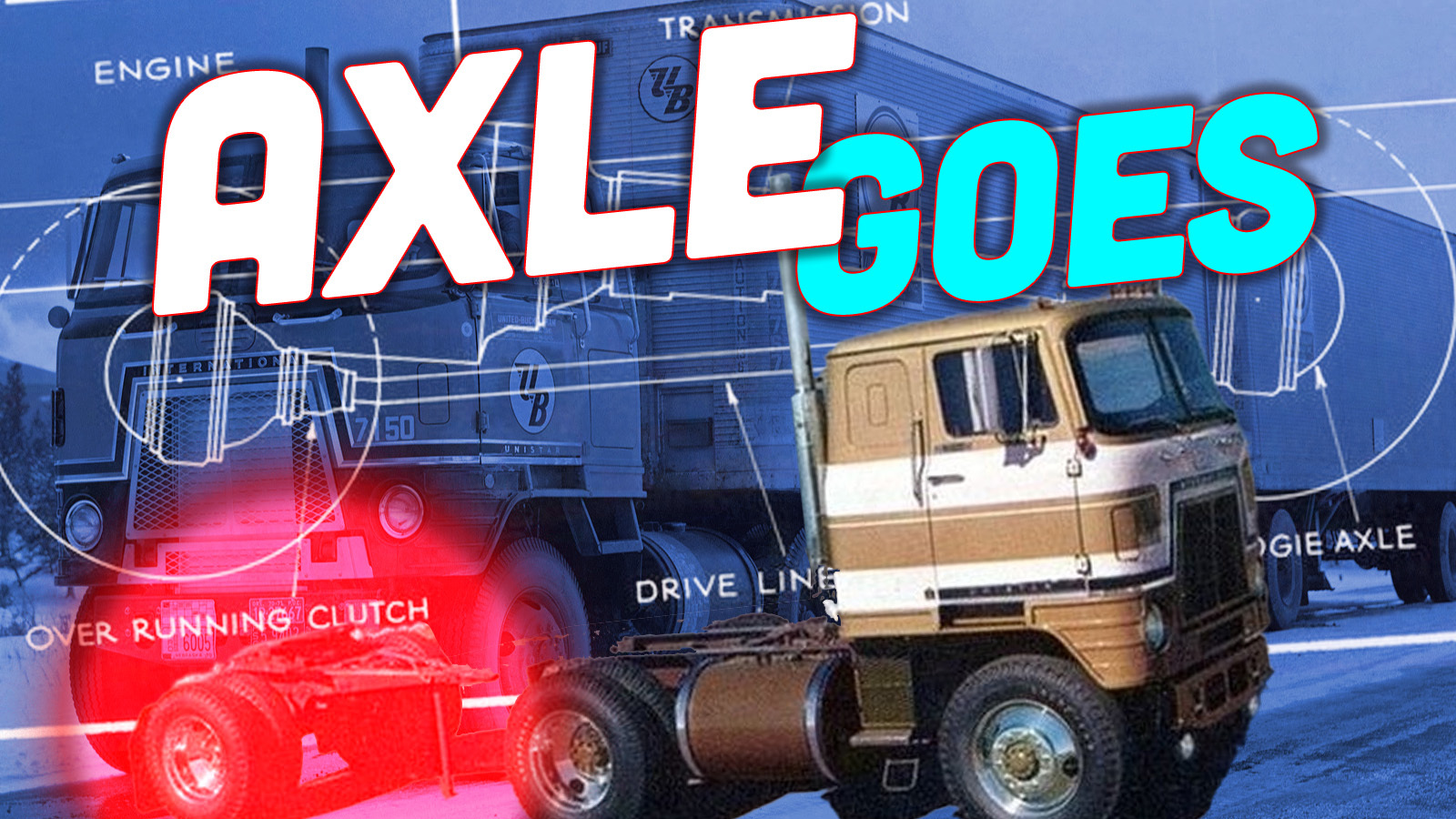When I first started in this glorious, noble profession of automotive journalism, I was young and innocent and full of dreams. Big dreams. Dreams of the future bringing wonderful things, like cars universally equipped to display, right there on the dashboard, without any need for plug-in readers or trips to a mechanic, any On Board Diagnostic (OBD) codes that the car may have, along with normal-language descriptions of such codes. These are the codes that cause the dreaded “check engine” light (CEL) to appear. I wrote about this dream way back in 2011, and now, nearly a decade and a half later, there has been effectively zero progress on this front, and I think it’s as important as ever.
I know a large portion of our readers will just think “why is this a big deal? OBD readers are only $20! And they’re stylish!” and sure, moneybags, OBD readers aren’t that expensive, but that’s not really the point. Yes, we’re people who think about cars most of their waking hours and have no issues rolling on the floormats of a car and feeling around under the dash for that chunky OBDII connector, but the vast majority of people who just use their cars as transportation appliances are not comfortable with such things, and in many cases, aren’t even aware there is a port under the dashboard that, when you plug a little doohicky into it, will tell you why that check engine light came on.
The truth is that most people are in positions of terrible knowledge imbalance when it comes to repairing and maintaining their cars. They’re at the mercy of whatever the technician or mechanic says, and while I’d like to believe in the fundamental honesty of humanity, we know that’s sadly not a guarantee. People get taken advantage of all the time, and part of the issue has to do with the relative difficulty of getting diagnostic information about their own cars.
What makes this especially galling is that this denial of information to car owners is completely preventable, and would be trivially easy to do on pretty much any car that had been built in the past decade or so. Once, sure, there were issues with figuring out how to get information like specific codes because cars had very limited alphanumeric display capabilities. Though, even then, carmakers (very) occasionally would come up with clever, convoluted solutions to do this, like on this 1995 Cadillac Seville:
A few other cars had similar sorts of systems:
That was a long time ago, of course. Now, modern cars almost always have a full-color dot-matrix LCD screen that is not just capable of displaying CEL code numbers, but entire blocks of text, and hell, if you wanted, diagrams and illustrations or whatever. There is really nothing stopping all carmakers from showing a code that caused a check engine light, as well as a full description of what it means.
Just picture something like this that could appear on the center stack screen of a car when a check engine light code is thrown:

Why not do this? As it stands now, cars throw a check engine light, and for many people, that just means they look at it nervously as they fret about how much freaking money they’re going to have to dump out for whatever the hell that light means. Why should people be kept in ignorance about the state of their cars? Every car owner has the right to as much information as their car is able to give them. All cars know the codes they throw; why do they keep it a secret from their owners? Not having an OBD reader or the comfort to use one or the resources (time, money, opportunity, whatever) to go to a mechanic is simply not a good enough reason to keep the car owner ignorant of what’s happening under their own hoods.
If cars would just display what the code is and some manner of description on their dashboard screens, easily accessible to the owner, then at least the owner would have some sense of what they were dealing with. A CEL can come on from anything from a loose gas cap to a severe failure condition of some kind; any information about what’s going on is good information, isn’t it?
Plus, trouble codes could be saved to a car’s internal log, and, since so many cars have internet connectivity of some kind already anyway, why not give an option to send those logs, complete with timestamps and all relevant information, to an owner’s email, so they can then send it to mechanics or car-savvy friends to get an estimate or an initial diagnosis?
I get genuinely worked up when I think about this, even after all these years, because I’ve talked to too many people who feel helpless when it comes to getting their cars worked on, and the issue almost always comes down to a lack of reliable information. I’ve bought OBD readers for several friends and showed them how to use them, but I shouldn’t have to do that.

I’d actually like to see this become legally mandated. That’s right, I said it, I want to involve the authorities. When I’m Emperor of America, all cars will be required, under penalty of having the CEO of the offending carmaker placed in a dungeon, to display as much information as the car’s owner wants for every failure code that gets thrown. That includes standardized OBD codes as well as manufacturer-specific codes. If you own the car, this is, by right, your information. If carmakers can be so cavalier about gathering information about us – and they definitely are – then they can at least give us some actually useful information back.
These codes, along with detailed descriptions of what they mean, can all be downloaded to a flash drive or emailed to a specified address, so the car’s owner can do whatever they want with that information.
It’s absurd that this is not how things currently work. All new cars know their codes, all have the means to display them easily, and yet hardly any do. I’m not sure how to convince this industry that this matters, but I feel like it does. This is similar to the right-to-repair laws we’ve discussed before. This is an easy fix; just a bit of interface design and some software coding. Ideally, the way one accesses this data should be standardized across cars, too, so everyone knows how to find the information.
We have a right to know what our cars are telling us, without intermediaries or other equipment. We’ve been in a position to do this for well over a decade, and it’s time to actually make it happen. Carmakers, let people see what their check engine lights mean, right inside their cars. It’s time.









My 2014 Yamaha FZ09 shows codes in the dash, but the newer models no longer have that feature. They want you to take it to the dealer obviously. This is the reality of modern commerce.
This should be mandatory. Until that happens, many public libraries in the US let you check out OBD-II code readers for free, as well as access AllData and/or Chilton manuals.
Wow, never thought of this. But now that you mention, abso-f’ing-lutely. This has to happen.
Torque or other odb app on a android based double din with a odb dongle is the after market equivalent. Im not big on leaving stuff plugged in to the odb but enough people do it without issue although many telematic systems have reportedly fried ecus or other computers. Modern infotainment is almost always tied into the can bus and many manufactures use them to send vehicle heath reports so a screen to show those trouble codes shouldn’t be far fetched. But they want control and prying control out of their tiny baby hands is hard. But I think if we mandate positive and negative behavior reinforcement in MBA classes we can get there. Electric fly swatter from anti consumer or person idea some kind of candy when it’s pro consumer or person idea. Scale that to the csuite and maybe change will happen.
I’d vote for this so hard!
you don’t vote for emperors
I am your King! I didn’t vote for you.
I have a good portable scanner and an OBD2 to USB cable. There is PC software that is better than the average code scanner for troubleshooting and diagnostics.
Jason, Jason, Jason. Your heart is in the right place, and it’s so pure that you might not be able to see how absolutely, totally, completely Communist this idea is. You’re taking money directly from the shareholder’s hands. This will not be tolerated in 2025 America.
It’s getting worse. New GM cars have the ECU encrypted. Beyond reading (only) the codes they’re required by law to expose on the OBDII port, you’re locked out.
I have an aftermarket Android head unit in my BMW E39. It will read the codes. I can even search the web and watch videos about how to fix it, all in the car.
As a fellow E39 owner/wrencher/hostage, I feel like this level of access to diagnostic information would just make the car feel like it had a license to throw codes even more willy-nilly…
There no code for “Your radiator just exploded”.
As yet another E39 owner. Giving me access to those codes would be like handing a gun to a monkey. I want the codes only when I’m troubleshooting. My E39 has a nice collection of perennial codes that as long as I don’t see them, they don’t exist. I’m looking at you, air pollution sensor.
I like this plan, but with one addendum: rather than the president of the car company being put in a dungeon, the entire board of directors gets put in a dungeon.
Fines don’t work and are just a cost of doing business.Bring back dungeons!
I have a code reader under the seat of my jeep wrangler. I use it every few weeks to clear the check engine light for something or other. Worth the money to get a more expensive one with the code clearing feature. I got one for my kid and she know how to use it for her car. I also thing that cars should just display the codes but we all know they do not for the profits of dealers and mechanics.
I consider a code reader one on my must have tool when going days off pavement when overlanding. Nothing like the comfort of knowing why your check engine light is on when you may be a 3 day walk someplace.
Now, THAT is a Jeep thing.
I don’t understand. 😉
Reference to popular practice of referring to Jeep-specific experiences as a “Jeep thing”, usually positive, like dropping top or removing doors.
Yeah, I believe the idiom is, “It’s a Jeep thing; you wouldn’t understand.” I was just finishing it for you.
Yep I can clear a code without even getting out of the drivers seat.
They should also be forced to listen 7×24 to Skinny Puppy at 110 db while Zenón strobes flash in time to the beat.
It would be one less reason to pay for OnStar, of which there are already almost none.
I still wouldn’t. For the price of a month or two of OnStar I can just buy a code reader.
Fully agree. I never activated it beyond the trial period during which time I used it never.
I don’t think it’s absurd at all, from the automaker’s perspective, and even from a logic standpoint. Most people are not mechanics. Hell, many dealership and shop techs are not mechanics. They can’t properly diagnose an issue beyond what the computer tells them, and will happily fire the parts cannon at a problem, at your expense. And DTCs are often cryptic enough that you really do need to be able to holistically look at the system and the conditions to really be able to tell what’s going on. I once had a dealership tech try to replace an entire ECU in a Jaguar due to a persistent lean code…which turned out to be due to a frayed wiring harness.
All that is to say that if customers could just pull up the DTCs on the instrument panel, you’d have them trying to fix things they shouldn’t, or demand replacements for things that don’t warrant them. I think getting the manufacturer-specific code reader is a reasonable barrier to entry.
Yep, basically echoing my comments below.
Fair point, although there should be a happy medium. I wonder how many millions of dollars get wasted every year for people to be told their filler cap wasn’t on tight enough. We could at least show “basic” issues like gas cap, clogged air filter, etc.
Often an O2 sensor code means something as simple as a bad spark plug. Imagine clueless owners replacing 3 sensors in a row, only to then to go the dealer to complain their car told them repeatedly to replace that very specific part.
You need to be educated to be able to handle such a powerful tool. Most people aren’t.
One less thing to have swept up in a recall if it’s wrong.
It’s easier to be arms-length and claim the OBD reader got the details wrong than deal with the sting of a country-wide recall because you had a typo.
I would recommend a look at what constitutes a “recall” vs just a documentation update that counts differently.
My obd 1 ford bronco had codes displayed in the dash, you just needed to perform a certain ignition key sequence and write down the long or short dash light flashes. I can’t remember if it was long and short gaps between or the length of flashes themselves. My mechanic was impressed when what I asked him to fix was the right diagnosis.
If it was EEC IV you had to jumper terminals on the self test connector under the hood, not key turn sequences. Also the flashes are all the same length, but you have to pay attention to how long the gap is between them to know if it’s moving onto a new code.
I added this functionality to my 2001 Tracker when I upgraded my stereo. The head unit is basically just an android head unit, so I can get live data and codes through a bluetooth adapter connected to the unit. Works great!
While I generally agree, I think the small barrier of entry to this info that having to buy a cheap OBD-II reader provides might not be a bad thing. OBD codes are great at helping diagnose problems but they sometimes only show part of the story. An O2 sensor code showing lean could be a bad sensor, or it could be a vacuum or intake manifold leaks. A catalyst efficiency code could be caused by a bad cat, an exhaust leak, or a bad sensor. That can easily lead to incorrect diagnosis.
Of course people can be just as fooled by these codes when using a separate OBD-II reader, but if manufacturers allowed this info to be easily accessed without a separate tool some people may accuse the manufacturers of providing false info. At least by requiring a separate tool you actually have to go to a little effort to access this.
But hey, at least we no longer have to count flashes of a test light like I still have to on my 1985 Ford.
I think they could get away with it by making you tap “accept” on some warning before it will display the codes (just like a lot of infotainment screens put up a warning when you turn the car on). And, in this case, some clear language about how a code might not mean what you think it means could actually be helpful info to the owner.
Agreed. I once had a P420, standard advice is to replace the cat, but it was actually a failed PCV. If I had just
replaced the cat, eventually burning oil from the crankcase vapor would have killed it. For the people who know just enough to be dangerous—and sometimes I am one of them—this is not helpful.
Same here. My Toyota started throwing P0420 and P0430 codes. Like you said that normally means bad cats, but I decided to throw some downstream O2 sensors at it as a hail mary.
2 years later and the light hasn’t back come on and I am very thankful I didn’t unnecessarily put thousands of dollars of new cats on it.
Used cars should also tell you what’s wrong with them regardless of whether dealers or owners have tried to reset codes to hide problems.
Ideally the car would also list off neglected maintenance in a humorous fashion, like “Don’t listen to this motherfucker. The only thing he changed less often than my oil was his bed sheets. When he changed it right before posting the ad it was like a snow globe of black oil and metal shavings.”
OBDII readers are cheap, but not always the best or right. IIRC they also don’t always pull transmission codes. Yeah they’re invaluable in the “between times” that time after OBDII and before ubiquitous screens, but it’s completely unconscionable they are not part of the package today. Maybe right to repair legislation needs to include this?
I remember the days of key on – key off – key on-key off- key on then watching the flashing light pattern for the code, of course losing track, and having to do it all over again. Those were dark days.
An idea like this would get in the way of automakers fighting right to repair laws and dreaming of the day that you buy the car but they still “own” the rights to it that they can charge you for as a subscription for ever.
This might be overly-relevant to your screen name, but the fact that Ross-tech, APR, and all the other companies are able to provide aftermarket products to our cars so quickly and cheaply…I always thought that might light a fire under VAG and others to provide more flexibility from the factory.
There is so much potential money in selling people anti-obsolescence products (software, screens, etc) but the manufacturers are still hung up on the generic sales and service model.
Back in the day…. I had the whole serial to obd2 port setup with VAG-com that was so much fun to be able to program stuff on all VAG cars, but it has been years since I dabbled in that world. My B5 is now in parts after 289k miles and a broken timing belt. I’m slowly making progress on repair and upgrades. I still have my APR parts from 2003 on my S4. They have held up so nice.
I thought it was pretty cool on my 2016 GMC Canyon that I could hit the On-Star button and they would read the code to me. But yes, the code should be more or less easy to get (and a description of) out of one of the many screens in a car these days.
Also loved OBD1 cars and jumping a couple pins to make the code flash on the CEL. That was a cool trick.
I’m with you, Torch. Should be federally mandated, just like the OBDII connector is
Even more than an annoyance, I’d argue that the lack of DIY codes represents a complete failure of the car market — that is, we consumers don’t have clear visibility over what is going on, so we can’t even shop around knowledgeably. Most owners just take it to the dealer to be raked over the coals over minor things.
Bring back Double-DIN (or some replacement standard) while we’re at it.
Just the act of buying a car is painful enough. Then when we want to insure it, we don’t even have estimates (like the UK mandates in their “insurance bands”). And when we have an error light, more guessing. And now that I need 93 octane, I remember it’s on ZERO signs at stations. Only the pump. Just pull up and and bend over.
Man, the automotive world is full of market fails. It’s almost as bad as healthcare.
Insurance estimates would be amazing. Insurance rates are tied to how expensive it is to repair/replace parts. OEMs would be forced to compete to make their cars cheap to fix. Headlight units (along with everything else) cost thousands of dollars because there’s no incentive for anyone to try and make them cheaper.
Average cost to insure should be on the Monroney sticker.
For freaking sure. I have a cheap reader. I do think it’s a weird tool in places, but it’s instantly useful for narrowing down what you’re looking at. I’ve looked up codes for people many times (and I’m a weirdo introvert and don’t know that many people). Also, has anybody actually had a CEL that just required tightening the gas cap? Every article brings that up, but I’ve never seen that code, and I drove for miles with my gas cap banging on my back quarter panel when I was on a rush.
The CEL’s that require tightening the cap usually occur to the people who don’t read the “tighten until click” instruction on the cap.
I mean, I told on myself that I sat in line at the Costco gas pump and totally flaked on putting the cap back on. Mea culpa. But I was like “Finally, I’m going to see this mythical gas cap code!” And I didn’t. That’s weird.
Yesterday I watched a lady start the auto-pump at the gas station, then get back into her Mercedes GLE, close the door, start the engine, and make a phone call.
I was irrationally ragey about this. Like…the car should maybe even prevent this from being possible.
We have a law about this in New Jersey!
I have seen it – not due to the cap being loose per se, but rather that the o-ring seal had failed. Buy a new cap or just a new o-ring and good to go. Comes up as a Evap system fault.
Replace you gas cap every 100,000 miles or so.
Kinda. Bought a 2004 Sequoia that had just passed smog and a few days later I got a code for major evap leak. Popped open the fuel filler and discovered the smog tech forgot to put the gas cap back on. A new cap solved it.
Yes, I have had a CEL on my ex’s car turn on because they didn’t tighten the gas cap.
I think it won’t come up unless the Evap system pressure tests itself. I don’t know how often it does that.
Of course cars won’t show the codes. The upcharges for plugging in an OBDII scanner are huge at some shops and most dealers. It’s easy, almost free money for them. Can you imagine the greedy meltdown dealers would have if they couldn’t charge out the wazoo for that?
The sad thing is most part stores will do it for free.
California specifically prohibits that because repair shops were complaining that checking codes was a repair.
Wow… I gave my daughter my old code scanner when she moved out.
The idea of the car owner knowing exactly what’s wrong with their car, and researching or getting quotes with that information. Informed decisions…